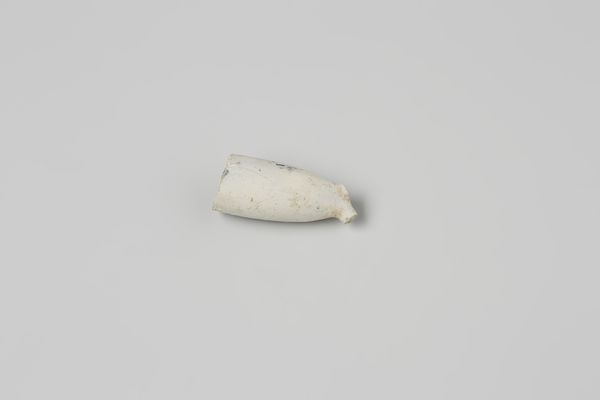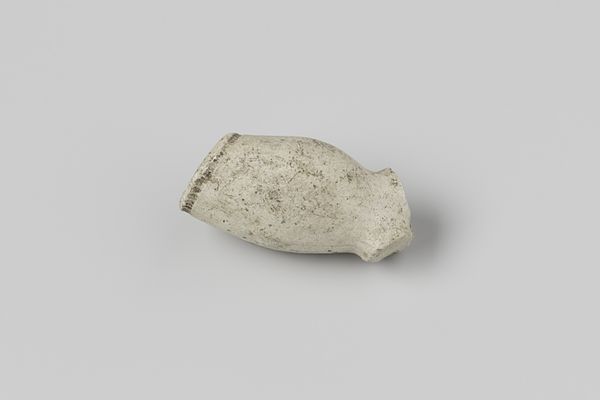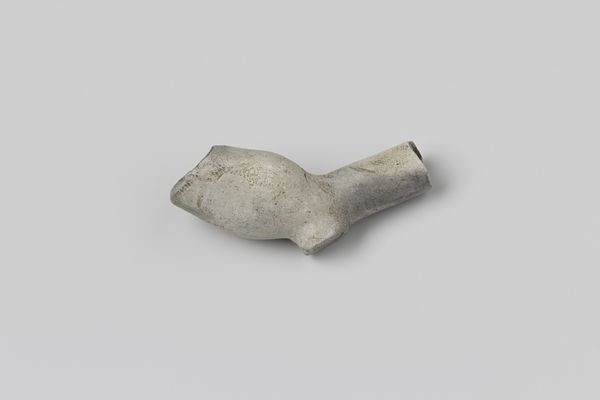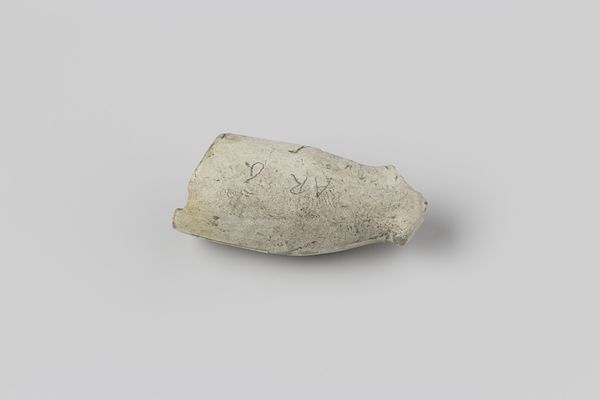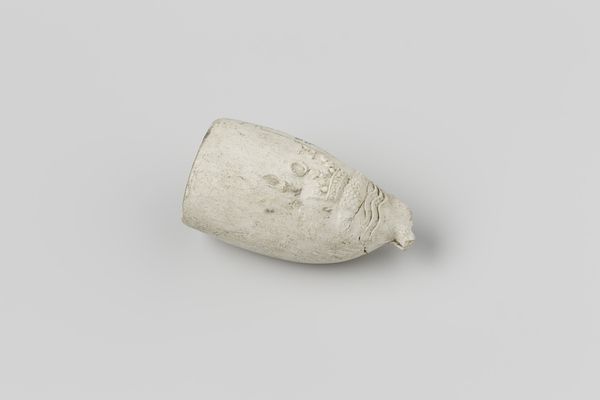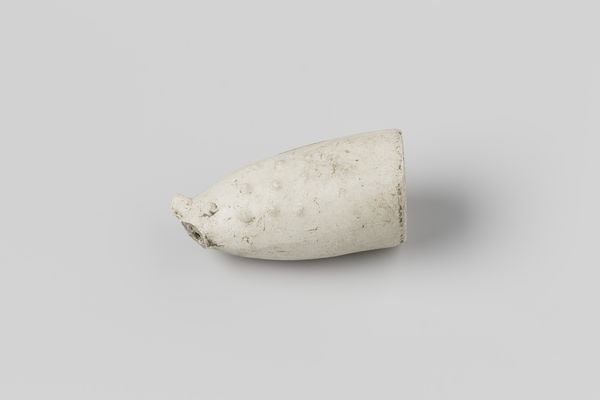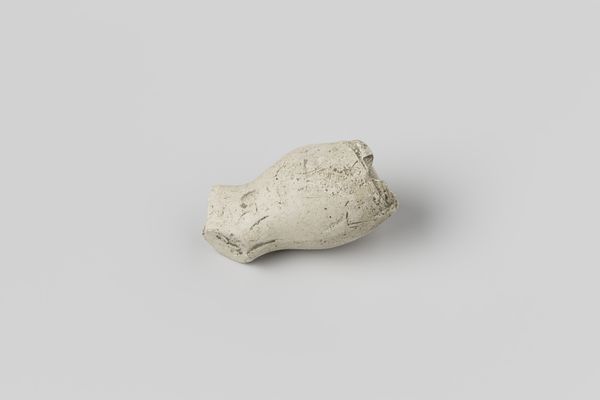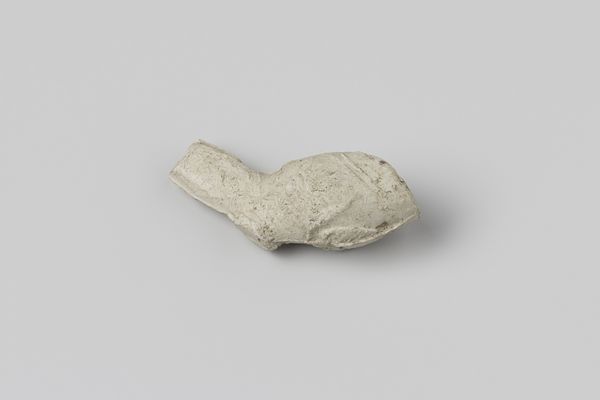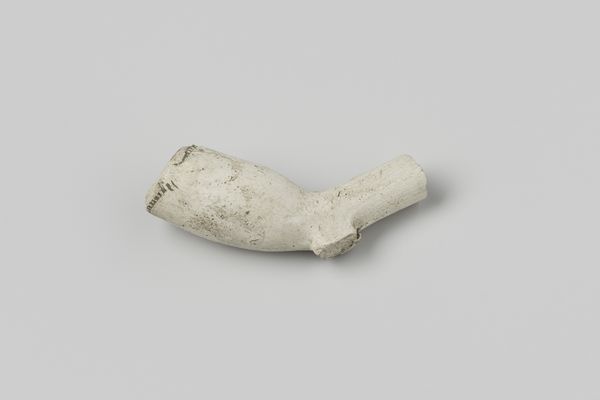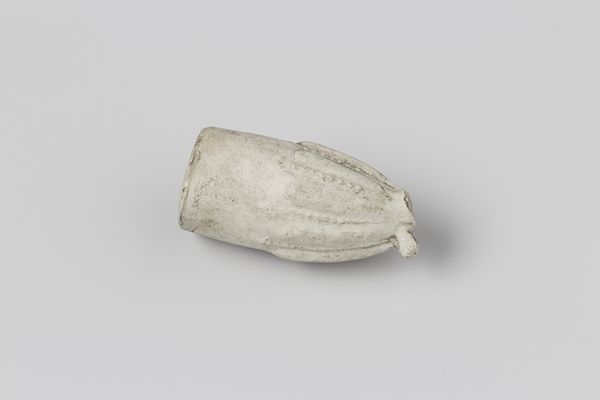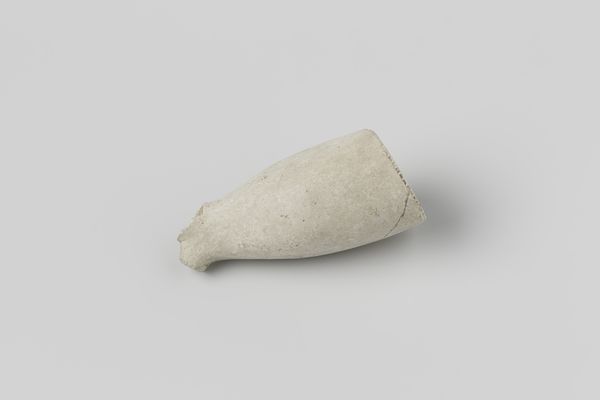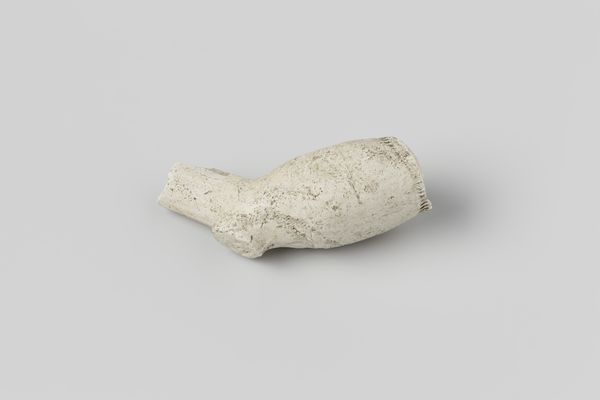
Fragment van een pijpenkop uit het wrak van de Oost-Indiëvaarder 't Vliegend Hart Possibly 1700 - 1735
0:00
0:00
ceramic, found-object
#
dutch-golden-age
#
ceramic
#
found-object
Dimensions: length 4.5 cm, diameter 2 cm
Copyright: Rijks Museum: Open Domain
Editor: We're looking at a "Fragment van een pijpenkop uit het wrak van de Oost-Indiëvaarder 't Vliegend Hart"—a fragment of a pipe bowl from the wreck of the East Indiaman 't Vliegend Hart'—dating possibly from 1700 to 1735. It's ceramic and categorized as a found object. I find it evocative despite its simplicity, like a whisper from the past. What catches your eye about this seemingly ordinary object? Curator: Well, it’s more than an object, isn’t it? It’s a fragment carrying the weight of a lost world. Consider the image: white ceramic, broken, suggesting fragility and the relentless power of the sea. What does that colour say to you about the original intent, or the trade itself? Editor: I guess white suggests purity or maybe even luxury. But the brokenness contradicts that. Was this kind of pipe common? Curator: These weren’t luxury items per se, but widely used, deeply symbolic, particularly for sailors and those involved in maritime trade. Smoking tobacco, especially in communal settings like a ship, created a shared experience. Think about what smoking rituals might have represented – camaraderie, a brief escape, marking time, all amplified in the confined space of a ship at sea. The very act of smoking, inhaling something from far away places, linked individuals to a broader global network. Editor: That’s fascinating. So even broken, it symbolizes connection. Curator: Precisely. Its survival as a found object also shifts the context, right? It’s no longer part of a daily ritual, but now embodies memory. Do you think the act of unearthing and preserving objects changes what symbols it can reflect? Editor: I think it adds another layer – a symbol of historical discovery and our need to connect with the past. It definitely changes my perspective on seeing this broken piece. Thanks. Curator: It shows how potent ordinary items can become over time through the process of continued symbolic engagement and our conscious choice to relate to history.
Comments
No comments
Be the first to comment and join the conversation on the ultimate creative platform.
